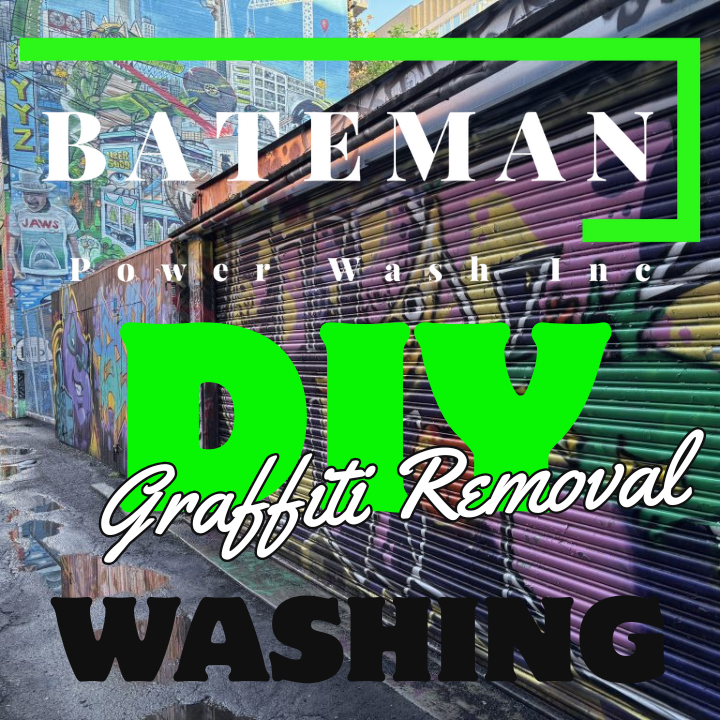Table of Contents
- Introduction: Why Graffiti Removal Matters
- Essential Equipment & Tools Checklist
- Choosing the Right Cleaner (And What to Avoid)
- Pressure & Application Settings: PSI, GPM, Nozzles Explained
- Prepping the Work Area: Safety & Protection Measures
- Step-by-Step Process to Remove Graffiti
- Troubleshooting Common Graffiti Issues (Porous Surfaces, Ghosting, Shadows)
- Post-Cleaning Treatments for Long-Lasting Results
- Advanced Tips: Speed, Technique, and Avoiding Damage
- Safety Protocols for Technicians
- Maintenance Schedule: How Often Should Graffiti Be Checked & Removed?
- Client Education: What They Should Know Before & After the Service
1. Introduction: Why Graffiti Removal Matters
Graffiti on commercial buildings, fences, or public structures is more than an eyesore — it damages property value, deters customers, and can even invite more vandalism if left untreated.
- Fast removal discourages repeat tagging.
- Professional cleaning restores original surface appearance.
- Proper removal prevents “ghost shadows” from lingering paint stains.
2. Essential Equipment & Tools Checklist
- Pressure Washer (Hot Water Preferred, 3–5 GPM, 2000–3000 PSI)
- Nozzles:
- 15° (Yellow Tip) — Precision removal on durable surfaces
- 25° (Green Tip) — Wider spray for brick, stone, concrete
- Graffiti Removers:
- Biodegradable graffiti removal gel
- Solvent-based remover for stubborn spray paint
- Soft Brushes (Nylon, Not Wire)
- Surface Protectors: Drop cloths, plastic sheeting
- Safety Gear: Goggles, gloves, respirator (when using solvents)
3. Choosing the Right Cleaner (And What to Avoid)
Ideal Cleaners:
- Eco-friendly graffiti removers (safe for concrete, brick, stone).
- Solvent-based removers for spray paint on metal or glass.
- Detergent boosters when combined with hot water pressure washing.
Avoid:
- Straight paint thinners (cause staining & surface damage).
- Overly harsh acids (etch surfaces & cause permanent marks).
DIY Mix Example:
- 1 Part Graffiti Remover Gel
- 1 Part Warm Water
- Agitate with soft brush before rinsing
4. Pressure & Application Settings: PSI, GPM, Nozzles Explained
- PSI: 2000–3000 PSI (only on hard, durable surfaces like brick, stone, concrete).
- GPM: 3–5 GPM for faster flushing of paint residue.
- Nozzles:
- 15° tip for detail, heavy stains.
- 25° tip for broader coverage without etching.
- Use low pressure with chemical application tips when applying removers.
5. Prepping the Work Area: Safety & Protection Measures
- Cover nearby plants, signage, and painted trim with plastic sheeting.
- Tape off areas not affected by graffiti.
- Block pedestrian access for safety during cleaning.
- Test remover on a small, hidden section first to ensure no damage.
6. Step-by-Step Process to Remove Graffiti
Step 1: Apply Graffiti Remover
- Spray or brush on graffiti remover.
- Allow 5–15 minutes dwell time (keep surface damp, don’t let it dry).
Step 2: Agitation
- Use a nylon brush to loosen paint from porous surfaces.
Step 3: Pressure Rinse
- Rinse with 2000–3000 PSI using a 15° or 25° nozzle.
- Work in smooth passes from top to bottom.
Step 4: Repeat if Needed
- Reapply remover for stubborn “ghosting.”
- Spot-treat small details with brushes and solvents.
7. Troubleshooting Common Graffiti Issues
| Problem | Solution |
|---|---|
| Paint Stains Remain (Ghosting) | Apply second coat of remover and agitate |
| Etched Shadows on Brick | Apply sacrificial protective coating post-clean |
| Overspray on Glass/Metal | Use solvent-based remover and razor scraper |
| Chemical Runoff | Pre-soak and rinse landscaping thoroughly |
8. Post-Cleaning Treatments for Long-Lasting Results
- Apply an anti-graffiti coating (clear, sacrificial, or permanent).
- Seal porous surfaces (brick, stone, concrete) to reduce future absorption.
- Schedule monthly inspections in high-vandalism areas.
9. Advanced Tips: Speed, Technique, and Avoiding Damage
- Use hot water (180–200°F) for maximum paint breakdown.
- Avoid direct blasting on delicate masonry — use chemical first.
- Work in shaded conditions to prevent rapid drying of cleaners.
- Keep a kit of brushes, solvents, and small nozzles for touch-ups.
10. Safety Protocols for Technicians
- Wear respirator when using strong solvents.
- Keep work area ventilated.
- Never mix chemicals (especially bleach + solvents).
- Use proper signage to redirect pedestrians.
11. Maintenance Schedule: How Often Should Graffiti Be Checked & Removed?
| Environment | Frequency |
|---|---|
| High-Traffic Urban Areas | Weekly inspections |
| Suburban Commercial Buildings | Monthly inspections |
| Schools / Playgrounds | Immediate removal recommended |
| Transit Stations & Public Walls | Daily to weekly monitoring |
12. Client Education: What They Should Know
Before Service:
- Move vehicles away from work zone.
- Keep windows closed.
- Inform staff/customers of blocked-off areas.
After Service:
- Expect some “ghosting” on porous brick (may fade with weather).
- Plants may need extra watering to neutralize chemical overspray.
- Apply protective coatings to make future removals faster & cheaper.
- Immediate reporting of new graffiti prevents permanent staining.

